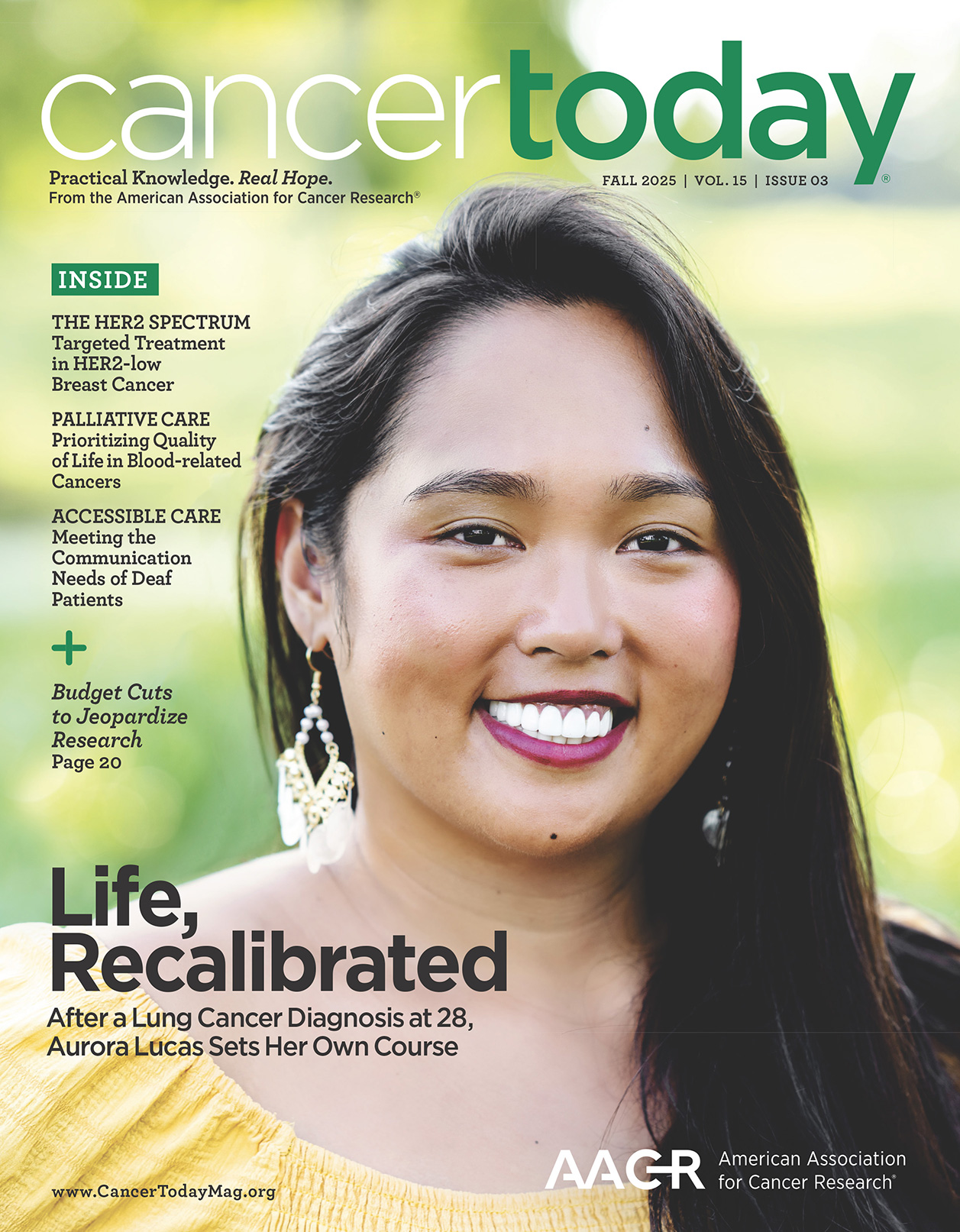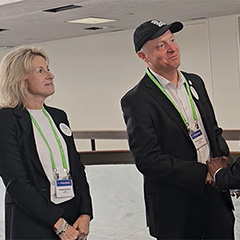
Kevin McLaughlin Photo by Vera LaMarche
A cancer diagnosis changes lives, not just for patients but for family members, friends and co-workers. Future plans and expectations are put on hold or changed to accommodate treatment and its aftermath. Patients and loved ones are besieged with complex terms and concepts, unfamiliar and potentially frightening therapies, and uncertain outcomes and long-term effects. They need to make one decision after another about doctors, hospitals and treatments.
Two articles in this issue of Cancer Today touch on making decisions. One set of choices is as old as cancer medicine itself—whether and how to continue treatment as the likelihood of curing or controlling cancer diminishes. Cancer Today contributing editor Sue Rochman writes about MTV personality Diem Brown, who died at 34 of metastatic ovarian cancer, and Brittany Maynard, who made headlines with her choice to end her own life just shy of 30 after being unsuccessfully treated for glioblastoma, a rapidly progressing and deadly form of brain cancer. While Maynard took medication to end her life, Brown chose to undergo virtually every therapy available until her death. Because of their different choices, media coverage placed them at the opposite extremes of how to deal with terminal illness.
Yet the women had something in common—they made their own decisions about how to address their illnesses. According to Eduardo Bruera, a palliative care specialist at the University of Texas M. D. Anderson Cancer Center in Houston, patients must blend the information their doctors provide them about their disease and prognosis with their own values and beliefs. “Whether we are positive or negative, if we had a mother or father die of cancer, our belief system and whether we believe in prayer—all of that will go into the way we will process disease,” he says.
The other set of decisions described in this issue has been brought on by advances in genomic testing for inherited cancer mutations. What would you do if, after undergoing testing because of a family history of one type of cancer, you discovered you had inherited a genetic mutation that put you at increased risk for another cancer type?
Contributing writer Alexandra Goho describes unexpected decisions that can arise after people undergo genomic testing to determine their cancer risks. For example, a woman may be tested for ovarian cancer risk and find she has a mutation in the CDH1 gene, associated with a very high risk of stomach cancer—so high, in fact, that doctors recommend patients with this gene mutation have their stomachs removed as a preventive measure.
In addition, while people hope the results of genomic testing will clarify their cancer risks, in some cases they muddy the waters. Testing may reveal a genetic predisposition for a type of cancer for which there are no effective screening tools or therapies, or it can uncover so-called variants of unknown significance, mutations that might be harmless or that might cause disease.
According to Susan Domchek, a medical oncologist at the University of Pennsylvania’s Abramson Cancer Center in Philadelphia: “It’s really important for people to know what they’re getting into when they undergo testing with these multigene panels. They need to talk with their doctor about the pros and cons, because I think there is the assumption that more is better. But like everything, that’s not always true.”
Cancer Today magazine is free to cancer patients, survivors and caregivers who live in the U.S. Subscribe here to receive four issues per year.




